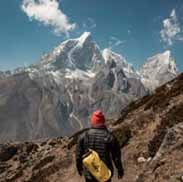APUSH: Chapter 16 Vocabulary – Flashcards
Unlock all answers in this set
Unlock answersquestion
Californios
answer
Hispanic residents of California who were afraid they would lose their land to English-speaking immigrants, which they eventually did, either through corrupt business deals or outright seizing
question
Chief Joseph
answer
leader of the Nez Perce; fled with his tribe to Canada instead of to reservations, but was brought back to reservations by US troops
question
Chinese Exclusion Act
answer
1882; excluded Chinese immigrant workers from entering the country for ten years and denied US citizenship to Chinese nationals living in the US
question
Chisholm Trail
answer
one of the first, busiest, and most famous cattle trails from the open range of south Texas to the railhead in Abilene, Kansas
question
"Concentration" Policy
answer
1851; Indian reservation policy that had each tribe assigned its own reservation confirmed by separate treaties; divided tribes, making them easier to control and allowed the government to force tribes into scattered locations and take the most desirable lands for white settlement
question
coolies
answer
indentured servants with conditions close to slavery
question
Dawes Severalty Act
answer
1887; attempt to "Americanize" the Indians by giving each tribe 160 acres of land, after 25 years this property would become theirs and they would become American citizens
question
Frederick Jackson Turner
answer
a historian who delivered a paper titled "The Significance of the Frontier in American History" to the American Historical Association; argued that the end of the "frontier" also marked the end of one of the most important democratizing forces in American life
question
Frederic Remington
answer
painter and sculptor who captured the romance of the west and its image as an alternative to the eastern way of life; portrayed cowboys as natural aristocrats; one of the most beloved and successful artist of the 19th century
question
Genizaros
answer
Indians who were without tribes because they had voluntarily left them; were at the bottom level of the Spanish caste system in the Southwest
question
George A. Custer
answer
a United States Army officer and cavalry commander in the American Civil War and the Indian Wars; dispatched to the west to fight in the Indian Wars; disastrous final battle overshadowed his prior achievements; killed in the Battle of Little Bighorn in 1876
question
Geronimo
answer
Apache chieftain who succeeded Cochise; raided the white settlers' outposts in the Southwest as resistance to being confined to a reservation; numbers dwindled after each raid, by 1886, his band only consisted of 30 people; surrender marked the end of the formal warfare between Indians and whites
question
Homestead Act
answer
1862; encouraged Western migration by providing settlers 160 acres of public land. In exchange, homesteaders paid a small living fee and were required to complete five years of continuous residence before receiving ownership of the land. After six months of residency, homesteaders also had the option of purchasing the land from the government for $1.25 per acre; led to the distribution of 80 million acres of public land by 1900.
question
Little Bighorn
answer
battle during which the Sioux Tribe defeated the US army forces led by Colonel George A. Custer in 1886
question
Long Drive
answer
journeys in the plains states by ranchers who needed a way to easily transport their cattle to eastern cities
question
Mark Twain
answer
American author and platform lecturer; lived from 1835-1910; used "romantic" type literature with comedy to entertain his audiences; 1873, wrote the Gilded Age; greatest contribution was the way he captured the frontier realism and humor through the dialect his characters used
question
Mestizos
answer
a person of mixed European and Native American heritage
question
Plains Indians
answer
widespread Indian groups in the West that were dependent on buffalo and had no permanent settlements
question
Rocky Mountain School
answer
school of art that celebrated the new West is grandiose canvases and emphasized the ruggedness and dramatic variety of the region, reflecting awe toward the land; most famous painters included Albert Bierstadt and Thomas Moran
question
Turner Thesis
answer
argument that the end of the "frontier" also marked the end of one of the most important democratizing forces in American life; expressed that the best land was taken and that it would not be more difficult for individuals to acquire land; was wrong in the sense of calling the West a true "frontier"
question
Wounded Knee
answer
last major armed conflict between the Lakota Sioux and the US, subsequently described as a "massacre" by Gen. Miles in a letter to the Commissioner of Indian Affairs



